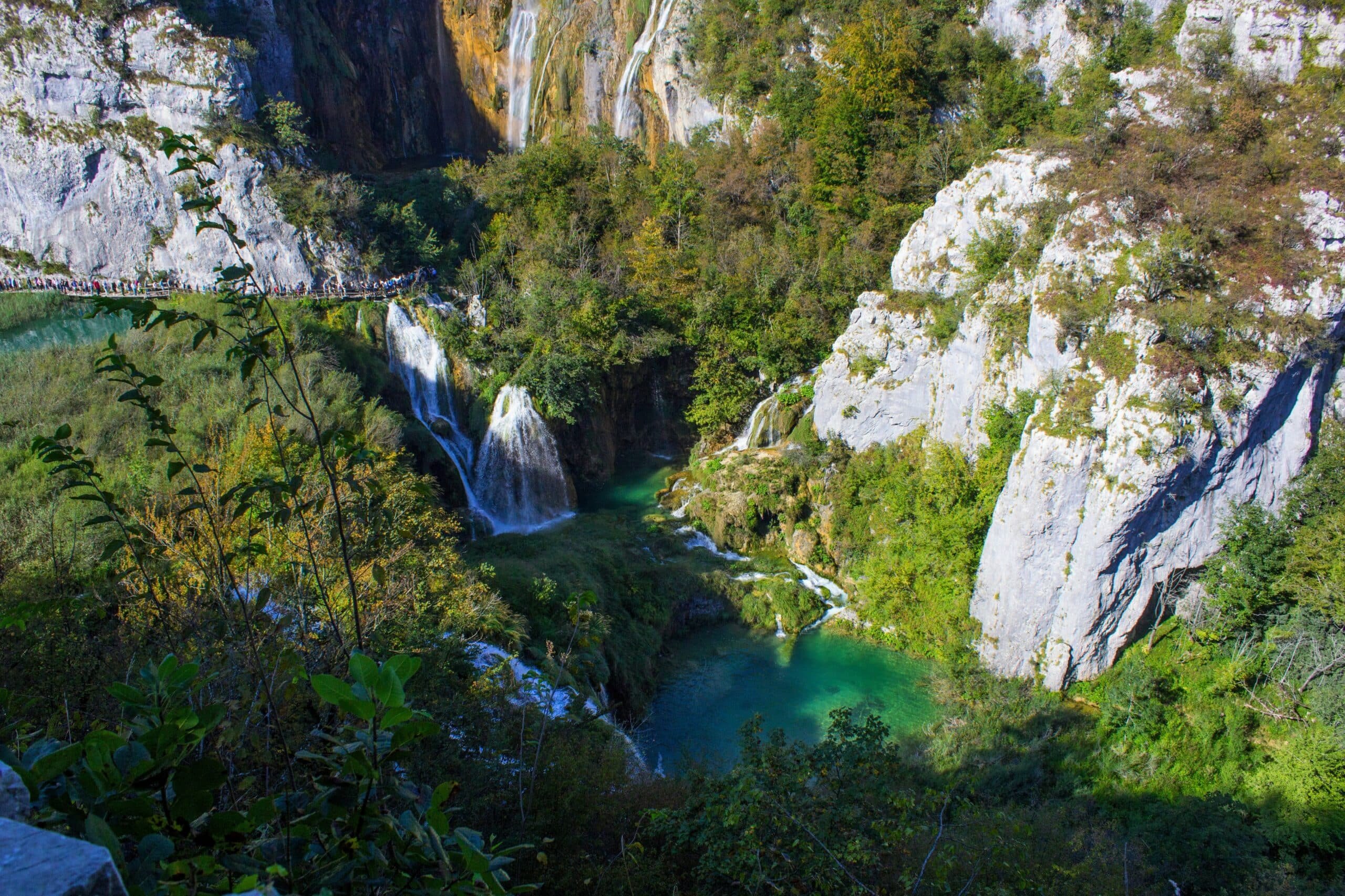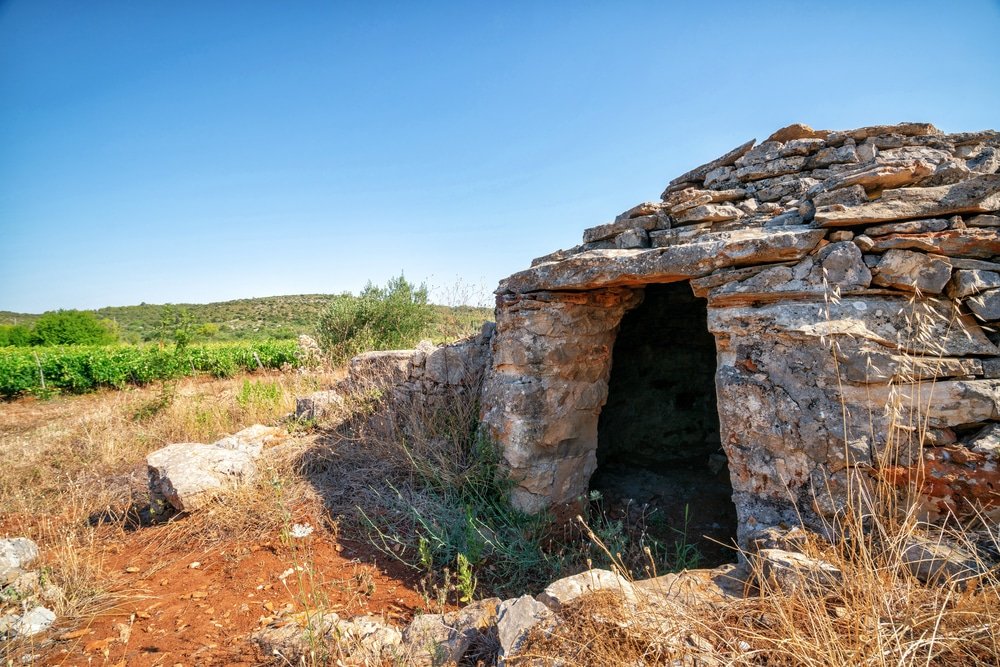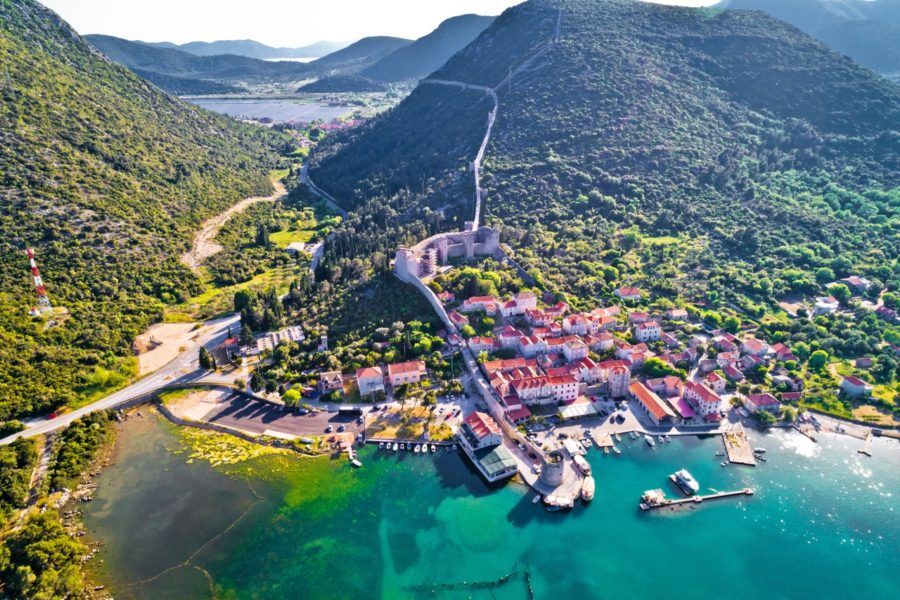There are now ten UNESCO sites in Croatia, and ten more are being considered for future additions. Travel Croatia with us and discover why now is the time to visit these very special world heritage sites.
Croatia is among the top tourist destinations in Europe – it’s a country rich in history and culture and has some of the most beautiful islands in the world. Apart from over a thousand islands and islets on its Adriatic coastline, Croatia also boasts ten UNESCO World Heritage Sites that are not to be missed.
There used to be eight Croatia UNESCO World Heritage Sites until 2017, when two more were added to the list, bringing the total to around ten. Another ten sites are currently being considered for inclusion in the UNESCO World Heritage Croatia list. For now, however, they remain on the “Tentative List.”
We included a handful of the most interesting ones at the end of this post, as they may soon become actual UNESCO World Heritage Sites in Croatia.
This list of UNESCO World Heritage Sites in Croatia that are protected, preserved, and identified as national heritage makes magnificent places to visit in the fall (autumn) when the summer crowds have dissipated.
Skip Ahead To My Advice Here!
1. Stećci Medieval Tombstones Graveyards
 Stecci in Imotski, Croatia Photo: Moddzak
Stecci in Imotski, Croatia Photo: Moddzak
The newest addition to the list is the Stećci, the Medieval Tombstones Graveyards, which are also found in Bosnia and Herzegovina, Montenegro & Serbia. There are 30 sites located in four countries.
So what are Stećci? They are cemeteries and regionally distinctive medieval tombstones carved from limestone dating back to the 12th century. The Stećci features a broad range of decorative motifs and inscriptions representing iconographic continuities within medieval Europe and locally distinctive traditions.
Why Visit The Stećci?
In short, the Stećci are a tremendously important part of the local Balkan culture. The oldest ones, dating to the 1100s, are monolithic tombstones that are utterly unique in the world, only found in this relatively small corner of Europe (although they are located in four different countries).
They are so special because all three medieval Christian faiths used this type of tombstone in the region: the Orthodox and Catholic Churches and the Church of Bosnia. Their sheer volume—more than 70,000 of them—also sets them apart from all other historical burial monuments in Europe. They’re an intrinsic part of Croatian heritage and culture.
2. The Old City Of Dubrovnik

Considered the “Pearl of the Adriatic,” the old city of Dubrovnik flourished when it became a center for maritime trade in the 15th and 16th centuries. Among the most popular places to visit in Croatia and established as a UNESCO World Heritage Site in 1979, Dubrovnik boasts many Gothic, Baroque, and Renaissance architectural monuments such as churches, palaces, and monasteries.
The Old Town of Dubrovnik is undoubtedly one of the absolute top sites in Croatia to visit. It is among the best-preserved medieval cities globally, and the old town showcases the beauty of Croatian culture where the city walls can be enjoyed all year round.
Moreover, it’s arguably also one of the world’s most beautiful UNESCO World Heritage cities, topping any list of cities in Croatia to visit.
Why Visit Dubrovnik?

There are so many things to do in Dubrovnik, such as visiting its vast number of Gothic and Renaissance structures. The Sponza Plaza and the Rector’s Palace are worth the visit, as are the impressive two kilometers of city walls along the coast.
Dubrovnik is a real gem and is one of those Croatia UNESCO sites you really won’t want to miss. Not to mention, it’s the perfect starting point for a Croatia road trip! Plus, you can head out of the Old Town Dubrovnik UNESCO site and discover parts of this coastal city that not everyone sees. Here is a comprehensive 3-day Dubrovnik itinerary suggestion to get you started.
3. Plitvice Lakes National Park

One of Croatia’s two natural UNESCO World Heritage Sites is Plitvice Lakes. Enrolled as a UNESCO Heritage Site in 1979, Plitvice Lakes National Park is a beautiful area of lakes and waterfalls that boast spectacular flora and fauna. Over thousands of years, the lakes, waterfalls, and formations in this national park were formed on its vast limestone and chalkland.
To keep Plitvice Lakes thoroughly clean, swimming or water sports are not allowed. The park is also home to rare species of birds, brown bears, and wolves.
Why Visit Plitvice Lakes National Park In Croatia?

It’s true nature at its finest. The 16 blue-green lakes separated by natural dams are breathtaking, with the colors changing along with the seasons. This guide to visiting Plitvice Lakes will help you enjoy this extraordinary World Heritage Site.
Brands We Use And Trust
4. The Historical Complex Of Split & The Palace Of Diocletian

Established as Croatian heritage in 1979, Split’s Historical Complex is a massive 38,500 square meter area of Roman archaeological monuments. Built by the Roman Emperor Diocletian as his retirement palace in 300AD, its most distinct structure is Diocletian’s Palace.
This is now an open-air museum that gets oooooh-and-ahhs from every visitor who enters its doors. The Palace was built with stone from the island of Brač and was depicted on the backside of the previously used Croatia 500 kuna banknote that was released in 1993-2022. (Croatia now uses the euro)
Why Visit The Historical Complex of Split?

This Split UNESCO site is one of Croatia’s most magnificent historical attractions in the second-largest city of Croatia. Walking inside the vast complex is like a trip back in time—Marvel in the well-preserved Roman architecture structures that will take you back 2,000 years. Plus, you can wander the halls, take a Game of Thrones tour, and see the Palace as it was in the HBO TV show. Croatia’s
5. The Historic City Of Trogir

Home to one of the best medieval architectural structures in Europe, Trogir, situated pretty much next to Split, boasts the best-preserved Roman-Gothic complex in Central Europe. Enrolled as a UNESCO World Heritage Site in 1997 due to its unparalleled beauty and cultural value, the Historic City of Trogir boasts many palaces and churches.
Why Visit Trogir?
Trogir is undoubtedly one of the best heritage sites in Croatia. It is home to many gorgeous Baroque buildings, Venetian-era Renaissance structures, and Romanesque churches such as the Church of St. Lovro – among the most important architectural buildings in Croatia. And Game of Thrones fans will enjoy the fact that this town is the backdrop of the Trading Harbor of Qarth.
6. Episcopal Complex Of The Euphrasian Basilica In The Historic Centre Of Poreč

The most complete complex of its kind in the world, the Episcopal Complex, was built in 313 and is among the best examples of Byzantine architecture and art in the world. Featuring a church, memorial chapel, atrium, baptistery, and the episcopal palace, its most outstanding feature has to be the beautifully tiled mosaic illustrations that glow like gold in the candlelight.
Why Visit The Episcopal Complex?
The Episcopal Complex of the Euphrasian Basilica is believed to be one of the founding places of Christianity. It’s easily one of the top Croatia holy sites. Now, that’s cool! Read more about the Episcopal Complex here.
7. The Cathedral Of St. James

The most significant architectural Renaissance monument in Croatia, the Cathedral of St. James, stands majestically over its many visitors.
One of the Croatia World Heritage Sites since 2000, this Catholic church lies in the often-overlooked town of Šibenik in central Dalmatia. The Cathedral is a magnificent example of a blend of architectural heritage from northern Italy, Tuscany, and Dalmatia.
Why Visit The Cathedral Of St. James In Sibenik?
The 71 highly individualized exterior friezes of men, women, and children with different facial expressions have never been identified and add a mysterious air to this magnificent structure.
8. UNESCO Site Of Hvar Stari Grad Plain

Hvar’s Stari Grad Plain, which joined the UNESCO World Heritage list in 2008, is one of the best examples of ancient Greek agricultural systems in Croatia. The grapes and olives grown in the town of Stari Grad are still used today, perhaps in all of Central Europe, as they have since the 4th century.
Why Visit Stari Grad Plain?
While the tourist hotspots are located in central Hvar, the Plain has often been overlooked but provides the perfect backdrop and educational destination for anyone who wants to discover an ancient agricultural system from thousands of years ago.
9. Ancient And Primeval Beech Forests Of The Carpathians And Other Regions Of Europe

This serial and transboundary world heritage site stretches much of Europe, with locations in no fewer than twelve countries, from Austria and Belgium to Spain and Italy to Bulgaria, Ukraine, and Croatia.
Once covering vast tracts of the European continent, the European beech forests shrunk to the few patches that remain now since the last Ice Age. This iconic forest type is typical of the continent; its protection is more critical than ever.
In Croatia, three UNESCO sites still exist, containing surviving areas of Europe’s once-mighty primeval beech forests: Hajdučki I Rožanski kukovi in the Velebit National Park and two regions in Paklenica National Park (Suva Draga-Klimenta and Glavinovac-Javornik).
Why Visit The Ancient And Primeval Beech Forests?
While most of the current forests in Europe are undoubtedly beautiful, tranquil, and fantastic for casual walks and picnics, they’re usually not authentic. They’ve been carefully managed for decades or centuries, sometimes even replanted.
If you want to wander through an ancient, primeval forest in Europe, there are few places where you can do that. The sites that make up this critically important UNESCO World Heritage Site still allow you to experience what Europe once looked like.
10. Venetian Works Of Defense Between The 16th And 17th Centuries

Added to UNESCO World Heritage Sites in Croatia in 2017, the Venetian Works of Defense stretch out across three countries—Croatia, Italy, and Montenegro. The site comprises six different defense works extending over 1,000 kilometers along the eastern Adriatic coast. Together, they made up the so-called ‘Serenissima’ in the 16th and 17th centuries, the most crucial era in the history of the Venetian Republic.
Currently, UNESCO considers two Venetian works of defense in Croatia to be world heritage sites. The first is the Defensive System of Zadar; the second is the Fort of St. Nikola in Šibenik-Knin County.
Why Visit The Venetian Works Of Defense?
To fully understand the might and power of the Venetian Republic in the 1500s and 1600s, it’s important to see how they could defend themselves against many enemies and invaders. This long series of fortifications, both inland and coastal, show you how they did it. Some of these UNESCO World Heritage fortresses are among the most imposing buildings in Croatia.
Visit Zadar and the Fort of St. Nikola’s fortifications near Šibenik to learn more about maritime war, defensive tactics, and what makes an excellent strategic location.
5 Interesting Tentative UNESCO World Heritage Sites In Croatia
In addition to the ten UNESCO World Heritage Sites in Croatia that already exist, another ten are being considered. This is UNESCO’s Tentative List, which is filled with sites from all over the world that are potentially suitable to become world heritage in the (near) future.
Here are five tentative Croatia world heritage sites that are worth visiting. Note they are all popular tourist destinations already!
Velebit Mountain
Croatia’s largest mountain, Velebit Mountain, is a natural icon in the country. This vast mountain is remarkable for its variety as part of the larger Dinarides mountain chain, which runs south from the Alps across Croatia, Bosnia-Herzegovina, and Montenegro.
Towering steeply over the landscape on its coastal side, it slopes gradually towards the Lika Plateau on its inland flank. It has several mountain passes, many karst phenomena, freshwater reserves, and about 90 different habitat areas.
The entire mountain is so naturally valuable that it was declared an International Biosphere Reserve in 1978. Therefore, a future designation as a World Heritage by UNESCO would be no surprise.
Zadar – Episcopal Complex

The Episcopal Complex area that was proposed to be included in the list of UNESCO World Heritage Sites in Croatia lies in the historic heart of Zadar. This is a popular attraction in Zadar, located within the Old Town.
It comprises several historic buildings, including the iconic Roman Forum with its temple ruins; the Archaeological Museum; and the Episcopal Complex itself, which consists of the St. Donatus Church, the Cathedral of St. Anastasia, and the Archbishop’s Palace, among various other structures.
The Episcopal Complex is so remarkable because it offers an architectural timeline of Zadar’s history, from Roman times to the Middle Ages and modern times. The history of Zadar dates back to Roman times. In the 1st century B.C., the settlement became a Roman colony, which resulted in a new layout according to Roman town planning principles with longitudinal and transversal streets that divided the town into rectangular building blocks and squares.
Historical-Town Planning Ensemble Of Ston

Ston is a superb day trip from Dubrovnik. It is a collection of various cultural sites that vie to be recognized as world heritage sites. And they do have a lot going for them. The area is famous for its extensive fortified town walls, salt pans, historic villages, and natural areas.
Mali Ston is a major attraction in southern Dalmatia, a fortified village at the end of the so-called Great Wall that was designed according to detailed town-planning rules. The construction of everything from the harbor and shipyard to the defensive structures and arsenal was well-planned and thought out.
Inhabited for thousands of years, the Ston area is an excellent example of how people influence, manage, change, and preserve a landscape while coexisting with other natural beings. This long history of inhabitation and a wealth of cultural heritage make it a strong contender to become one of the newest UNESCO World Heritage Sites in Croatia.
Lubenice
An ancient fortified town on Cres Island, Lubenice’s roots lie 4,000 years in the past. Historically, it used to be a very strategic town, referred to in ancient times as Hibernitia (a winter settlement). It remained a critical village well after the Roman Empire’s decline, into the Middle Ages, and into modern times. Several archaeological finds have proven their ancient roots, including a sarcophagus, Egyptian inscriptions, and several other objects such as amphora, jewelry, and coins.
Nowadays, Lubenice is a small local village with about 40 buildings and no more than 30 permanent inhabitants. However, its millennia-long history and several architectural attractions make it a great destination and a logical inclusion on the tentative list of UNESCO World Heritage Sites in Croatia.
Varazdin – Historic Nucleus And Old Town (Castle)

Another fascinating place that might one day be a world heritage site is the historic old town of Varazdin. This gorgeous Old Town is extraordinary because it features a collection of buildings of various ages, including medieval, Renaissance, and Baroque. The proposed site includes the previously fortified inner town, the wide moat surrounding it, and the fortified Old Town, sometimes referred to as the Castle.
Varazdin is an architectural gem. It firmly holds its ground even compared to other larger and more famous towns and cities in the region. The Old Town, originating as a stone fortress in the 12th century and transformed repeatedly over the centuries, is exceptionally well-preserved.
If Varazdin became Croatia’s UNESCO World Heritage Site, no one would be surprised.
Move This Adventure To Your Inbox & Get An Instant Freebie

No spam. Unsubscribe at any time.
Croatian UNESCO Sites FAQs
What are the top UNESCO World Heritage Sites to visit in Croatia?
Some of Croatia’s must-visit UNESCO World Heritage Sites include Dubrovnik Old Town, Stecci Medieval sites, the Northern Velebit National Park, and the 6th-century Bell Tower of the Archbishop’s Palace.
How many Croatian sites are listed as UNESCO World Heritage Sites?
Croatia is home to 10 sites listed on the UNESCO World Heritage List, including archaeological sites, religious monuments, and ancient Roman towns.
Which UNESCO World Heritage Site in Croatia dates back to the 4th century BC?
The ancient Roman town of Poreč, located on the island of Hvar, dates back to the 4th century BC and is a popular historical landmark to explore.
What is special about the Stecci Medieval sites in Croatia?
The Stecci Medieval sites are unique medieval tombstones scattered across Croatia. They showcase intricate carvings and historical significance dating back many centuries.
Have you ever visited one of these UNESCO World Heritage Sites? Which was your favorite site?



visited 5 need to come back!
3 to go :D
Still have kuna I will return
Plitvice, of course!
Just got back from Croatia…an amazing country to visit
Certainly is!
When will the birth place of Marco Polo in Korčula get it?
Good question. I think there is still a question as to whether he was actually born there.
Not until it gets proven… which I guess is impossible huh?
Not just Marco Polo who Introduced Europeans with Asian culture, but Ragusa’s sailors who probably discovered America before Columbo.
Croatia is amazing. The four fortresses in Sibenik should also be listed. But I have been many times from Australia and Croatia is a tourist dream, need months to see everything and a small country in size. What about Krapinja Neanderthal site, the best find in Europe. The gorgeous towns of Varazdin and Rastoke should be on the Heritage list for their unique historical worth. The island of Murter and the Kornati arcphilago is also a special and unique place. You need two months in Croatia to get a real feel , problem is I see so many people getting addicted to the place. No better place to live if you are cashed up.
It would be great to have them located on a map.
They are all in google :D